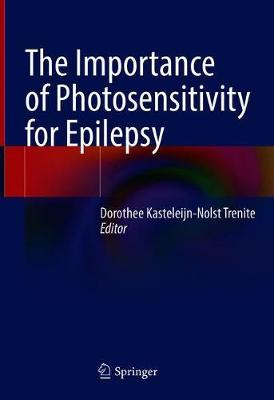(To see other currencies, click on price)
MORE ABOUT THIS BOOK
Main description:
This book offers a detailed account of all aspects of photosensitive epilepsy, including genetic testing, functional imaging (fMRI, MEG), pharmacological studies, animal studies, classification based on the occurrence of photoparoxysmal responses (PPRs) in different epilepsy syndromes, and the available prevention and treatment options. In addition, the comorbidity of and overlap between migraine and epilepsy are discussed. Informative case histories with EEG examples and a helpful glossary are included.
In epilepsy, the term photosensitivity is used both for epileptic seizures triggered by flashing or flickering light and for epileptiform discharges evoked by intermittent photic stimulation (IPS) during an EEG recording. Most patients with a clear history of visually induced seizures will show epileptiform EEG discharges during IPS (PPRs). As epileptiform discharges can be evoked in photosensitive patients at any time, without triggering seizures, they can be considered a useful surrogate marker of the necessity and efficacy of epilepsy treatment. This book will serve as an ideal guide to the subject for pediatricians, (pediatric) neurologists, epileptologists, (child) psychiatrists, clinical geneticists, neuropsychologists, neuropharmacologists, occupational therapists, and basic scientists.
Contents:
Part I. Has Photosensitivity changed over the years?.- Epidemiology.- Provocative factors.- History and positioning within reflex epilepsies.- PartT II. Does Photosensitivity Matter; Clinical Relevance?.- Correlation EEG and clinic.- Prognosis.- Special syndromes.- Does Photosensitivity exist in focal epilepsy?.- Existence of Photosensitivity in various disease states. Headache, Brain tumor, Depression and Mania, Pain, Alzheimer, Autism, Posttraumatic conditions.- What can we learn from a photosensitive patient?.- PART III. Abnormal Electroencephalographic Response to Photic Stimulation.- How to interpret Photoparoxysmal EEG results? Sleep, NSD etc.- The basics: what constitutes a Photoparoxysmal Response? FMRI, MEG,TMS and PET-studies.- Is Photosensitivity a threshold phenomenon? Gamma-band etc.- What can we learn from photosensitivity in animals? Baboon, dog, cat, rat, mouse, zebrafish.- Is there a difference between kindled and genetically prone photosensitive animals and how relates that to humans?.- Part IV. The PPR: influence of age, sex and ethnicity.- Familiar and genetic differences in outcome.- Ethnical differences.- Gender differences? Hormonal influences.- Age differences? Dravet versus IGE etc.- Part V. How to Approach the Patient with Photosensitivity.- Optimizing the patient's history: a modern approach to age-old life interviews.- Safety of EEG methodology in Photosensitivity.- Maximizing EEG methodology in Photosensitivity: do's and don'ts.- Identification of geographic sites studying photosensitivity.- PART VI. Treatment and Management of Photosensitivity.- Treatment and prevention: when?.- Treatment and prevention: how?.- Seizure control to prevent anxiety for new seizures- psychosocial impact.- Impact of photosensitivity on psychology: are JME with and without PPR different, self-induction etc.- Use of Photosensitivity as trait: a biomarker for genetics.- Creative use of Photosensitivity: studies exploring new AED and other drug development.- How to inform architects and videogame producers about possible risks of certain visual stimuli?.- What the patient and parents/caregivers need to know.- Photosensitivity within the classification systems: past, present and future.- Appendix.
PRODUCT DETAILS
Publisher: Springer (Springer International Publishing AG)
Publication date: December, 2020
Pages: 270
Weight: 1245g
Availability: Available
Subcategories: Neurology, Neuroscience, Occupational Therapy, Paediatrics and Neonatal, Pharmacology, Psychiatry

